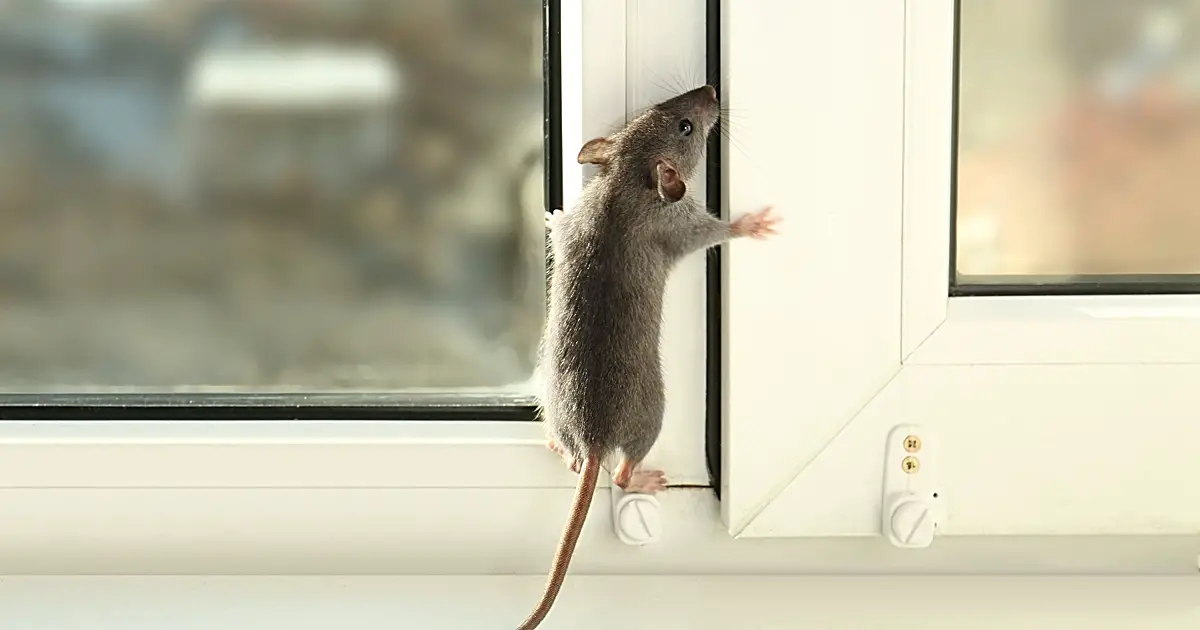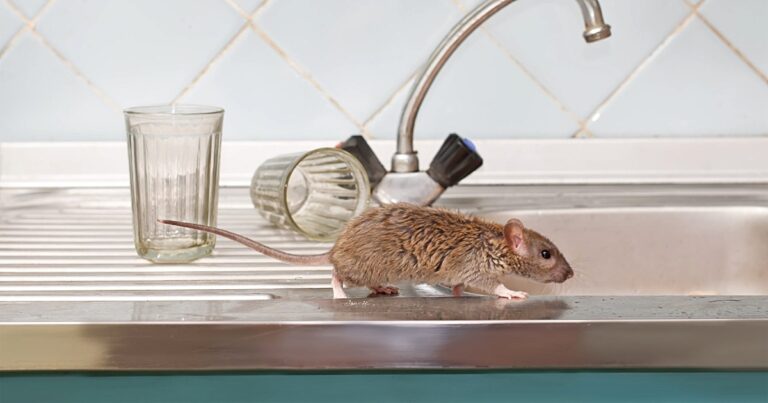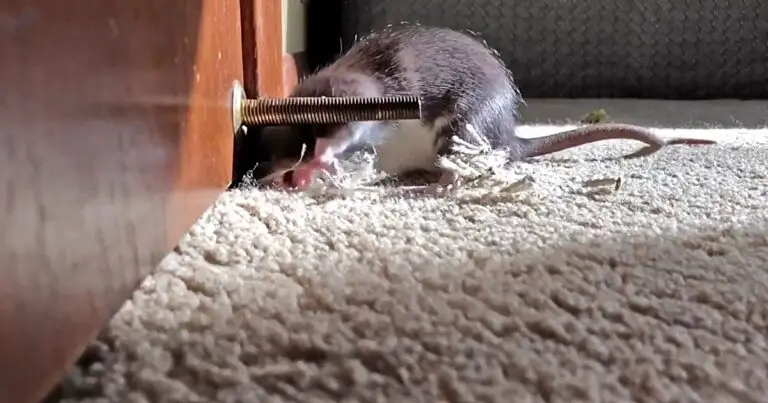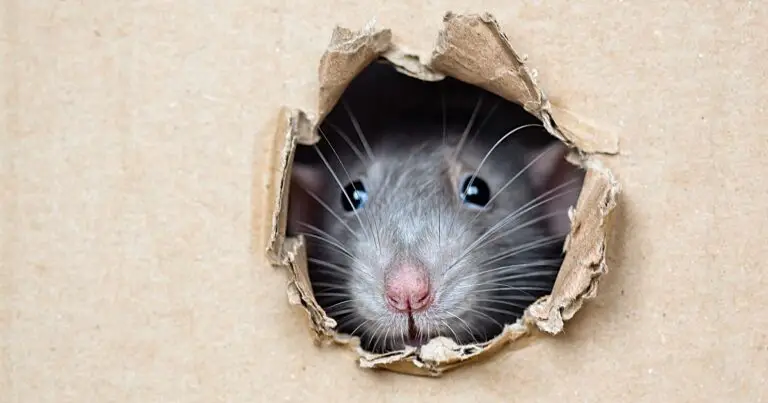Can Rats Climb Walls? (A Complete Guide)
Can rats climb walls? Rats are excellent climbers. They have sharp claws that help them grip onto surfaces, and their lithe bodies enable them to maneuver in tight spaces. Additionally, rats are very agile creatures and can jump high into the air. All of these factors make it possible for rats to climb up walls.
That said, rats typically prefer to stay close to the ground. This is because they are prey animals and are constantly on the lookout for predators. By staying close to the ground, rats can quickly dart into a hole or under a bush if they feel threatened.
So, while rats can technically climb up walls, they usually don’t do so unless they have to. If you have rats in your home, you’re more likely to find them scurrying around on the floor than up on the walls.
Can Rats Climb Walls?
Rats are excellent climbers and can scale vertical walls with ease. They can also “shimmy” up between walls and drain pipes. In addition, rats are excellent swimmers and have been known to enter premises through the water traps of toilet bowls when infestations occur in the main sewerage system.
Therefore, if you have a rat problem, it is important to seal up any cracks or holes in your walls and check your plumbing for any leaks or holes that rats could use to enter your home.
Rats can easily climb up fences, wood, trees, brick walls, drain pipes, and gutters. They can also squeeze through tiny cracks and crevices. However, rats will not attempt to climb indoor walls such as drywall. Instead, they will quickly scurry away and crawl through a nearby crack to escape.
How High Can Rats Climb?
Rats have claws and pads that allow them to grab and grip most surfaces. They can also use their tails for balance when climbing across narrow objects like ropes, chains, and wires. Their nails are also extremely harp and have dermal ridges that allow them to grip vertical surfaces. As a result, rats can climb up almost any vertical surface.
Rats are expert climbers and jumpers. Although not much is known about how high they can climb, they can jump 36 inches vertically and approximately 48 inches horizontally. If there are trees anywhere near your home, rats could climb those and leap from there to your roof. Once there, a rat could find its way into your home through cracks or drain pipes.
Rats are extremely resilient animals, being able to survive extremely steep falls. Research shows that rats can fall 50 feet without suffering any type of damage and without getting hurt.
What Materials Can Rats Not Climb?
Rats are expert climbers. They’re skilled at balancing their weight and finding handholds to scale walls and other surfaces. However, they still need something to grip when they’re climbing.
Rats can climb most surfaces, but there are a few materials that they cannot grip with their claws. Especially smooth vertical surfaces such as:
- Glass
- Tiles
- Polished Metal
- Concrete
These materials are too smooth for rats to grip with their claws. As a result, they will not be able to climb them. Rats can also not attach themselves to surfaces with any type of adhesive or suction. This means that they can not climb up walls by using their tails as anchors.
How Do Rats Get Into Your Home?
Rats can enter your home through any gap or opening that is bigger than their head. This includes cracks in the foundation, gaps around doors and windows, and holes in the roof. Once they’re inside, rats will quickly start to explore their new surroundings in search of food, water, and shelter.
There are 5 common ways and entry points for rats to get into your house:
- Cracks in the wall or foundation
- Through the chimney
- Crawling in through a damaged roof
- Sneaking in through vents
- Getting in through gaps in windows or doors
If you have rats in your home, it’s important to find out how they’re getting in and block those entry points. Otherwise, you’ll just be dealing with the same problem over and over again.
How Can You Prevent Rats From Entering Your Home?
The best way to prevent rats from entering your home is to seal up any cracks, gaps, or holes that they could use to get in. This includes cracks in the foundation, gaps around doors and windows, and holes in the roof. To prevent rats from getting into your home, you should:
- Seal up any cracks or holes in the foundation, walls, or roof
- Fix any damaged screens on doors and windows
- Repair any gaps around doors and windows
- Install vent covers to keep rats from entering through the vents
- Keep trees and shrubs trimmed away from the house
By following these steps, you can make your home much less attractive to rats and help to keep them out.
Rat-Proofing Your Home
If you have rats in your home, it’s important to take steps to rat-proof your property. This will help to prevent them from getting back in and will also make your home less attractive to other rats.
Steps to Rat-Proof Your Home:
- Install wall guards. Wall guards inhibit rats from ascending exterior walls by preventing them from latching on with their feet or chewing through the material. Smooth textures work best, as it’s more difficult for rats to grip onto them. They should also be at least 12 inches wide and 36 inches above the ground to prevent rats from jumping on them.
- Cut off all access to your house. Check the foundation and stairs, filling any cracks or holes that you may find. Even if it looks like a rat can’t fit through the hole, it’s worth investigating just to be sure.
- To keep rats out of your home via tree branches, maintain any trees less than five feet away that need trimming. Furthermore, keep the grass at the base of fences and bushes trimmed to prevent nesting.
- Seal drain pipes with a rat blocker by installing a non-return valve with a single flap. The single-flap valve is designed to only allow rats to exit the drain pipe, not enter.
- Wrap wires and electric cables with rodent repellent tape. By wrapping your electrical wires and cables with rodent-repellent tapes (which are often treated with Capsaicin), you can prevent rats from chewing and scaling them.
Once you’ve located all of the potential access points to your home, take steps to block them off. This may involve repairing cracks in the foundation, installing door sweeps, or trimming back trees and shrubs.
In addition to sealing up access points, you should also take steps to make your home less attractive to rats. This may involve cleaning up any food or water sources that they could use. It’s also important to remove any clutter from your property, as rats like to hide in small, dark spaces.
What Should You Do if You Find a Rat’s Nest?
If you find a rat’s nest on your property, it’s important to take steps to remove it. This will help to prevent them from spreading diseases and will also make your home less attractive to other rats.
To remove a rat’s nest, you should:
- Wear gloves and a mask to protect yourself from diseases.
- Remove any food sources that the rats may be using.
- Remove any nesting material, such as insulation or shredded paper.
- Disinfect the area to prevent the spread of diseases.
After you’ve removed the nest, it’s important to take steps to prevent the rats from returning. This may involve sealing up any access points to your home and removing any food or water sources that they could use.
If you have rats in your home, it’s important to take steps to get rid of them. This may involve setting traps or calling a pest control company. It’s also important to take steps to rat-proof your property to prevent them from returning.
If you have rats in your home, it’s important to take steps to get rid of them. This may involve setting traps or calling a pest control company. It’s also important to take steps to rat-proof your property.
Conclusion
Rats can climb up walls, and if you have them in your home, it’s important to take steps to get rid of them. This may involve setting traps or calling a pest control company. It’s also important to take steps to rat-proof your property so that they don’t come back.









3 Comments